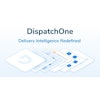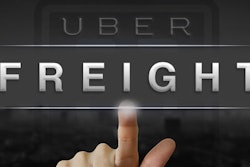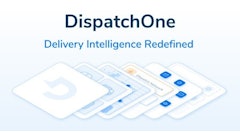
It’s no secret that transportation is one of the sectors that produces the most greenhouse gas emissions in the global economy. Getting goods from one side of the world to the other is incredibly resource-intensive, and it becomes even more resource-intensive once you get into the fundamental complexities and inefficiencies of last mile delivery.
So how are businesses that focus on last mile deliveries supposed to think about sustainability, particularly in light of the many carbon reduction strategies being rolled out in other industries? It’s easy enough to throw up your hands and decide that it’s a lost cause— but as consumers increasingly vote with their dollars for more eco-friendly brands, a better way to look at it might be this: that the last mile is so CO2 intensive that there’s a lot of room for improvement.
Optimizing last mile delivery routes, for instance, can potentially cut down emissions per stop by 10%. Reducing the need for redelivery attempts by increasing first attempt success rate reduces your carbon footprint even further. In other words, it’s not that hard to make a dent in emissions— it’s just a matter of working toward delivery optimization.
Of course, it’s not enough to make an effort without trying to quantify the results. That’s why the ability to track CO2 at both the execution and planning phases is crucial to getting—and showing—results.
Prioritizing Sustainability in the Last Mile
Taking a look at the specific tactics that last mile operators are using to reduce their carbon footprints, the key here is to closely examine the areas that contribute the most CO2 to the process. The primary culprit is fuel consumption, which scales linearly with miles driven. There are also things like the heating and cooling of warehouses, as well as general wastage (e.g., from returned items that ultimately have to be destroyed or thrown away).
With this in mind, there are a few tactics that last mile operators employ on this front:
- Route optimization: Businesses can optimize routes with AI-powered tools that are purpose-built for the job, enabling a 10% or more reduction in mileage. This translates directly into less fuel usage, which decreases your carbon footprint right off the bat.
- Offer green delivery options to customers: Like we said above, green logistics is, at least in part, a consumer-driven phenomenon. As such, many buyers will explicitly choose an eco-friendlier delivery option if given the choice.
- Reduce redelivery attempts: Second attempts at delivery essentially means the carbon impact of an order is doubled. Taking the appropriate steps to reduce the frequency with which this happens—e.g., by sending customers timely delivery alerts—can make a huge difference when it comes to your total carbon output per order.
- Decrease wastage: This can encompass a lot of techniques up and down the supply chain, but in the last mile in particular it’s often a matter of smarter returns management. With clear documentation of what comes into your distribution center at the end of the day, it’s much easier to avoid throwing out stock that could have been redelivered.
Challenges in Going Green
There’s no doubt that the complexities of last mile deliveries may seem to be working against you when it comes to boosting your green logistics initiatives.
Route optimization, for instance, requires having powerful tools that can help cut through the inherent complexity of meeting all of your customers' needs while using delivery capacity as efficiently as possible. This is impossible to do by hand and difficult with some routing technologies that don’t adequately factor in things like service time, historical traffic patterns, etc., and when calculating ETAs.
By the same token, reducing not-at-homes has historically been a challenge—in part because the last mile often feels like a black box once the trucks leave the warehouse. Providing visibility to customers — like enabling them to see when they can expect the driver to show up— is a matter of total connectivity before, during, and after the delivery process.
And all of that is before you try to actually measure your carbon footprint. It’s crucial to have a high degree of visibility into your actual route performance in order to figure out how much fuel is consumed, for instance. Without taking measurements here with the ability to compare trends over time, it’s difficult to figure out what's working and what isn’t when it comes to carbon reduction.
Best Practices for CO2 Tracking Delivery Planning
There may be some hurdles to tracking —and reducing— CO2 consumption in the last mile. But modern technology has caught up to these hurdles, and with the right best practices it’s possible to cut down on your carbon footprint and actually measure results.
- Configure emissions expectations based on vehicle and load types: CO2 emissions are going to be a product of how many miles are driven, but the fuel economy of those miles will change depending on the vehicle type and how heavily loaded it is. This is something that needs to be accounted for while tracking.
- Track CO2 per stop at the planning stage: Your route optimization portal should have the ability to visualize the CO2 emissions for every stop on each route, and update that number depending on how the stops on the route are sequenced. This offers the necessary visibility to see whether different groupings of stops can reduce emissions.
- Track CO2 per route at the planning stage: Visualizing CO2 emissions per stop during route planning helps to potentially find more carbon-efficient sequences of stops—but from there it’s important to take a step back and look at emissions from a more holistic perspective. Again, by doing this during the routing phase, it’s easier to take control of emissions more effectively.
- Track planned versus actual CO2 consumption: When it comes to the last mile in particular, the best-laid plans often go awry. To make sure your carbon-efficient delivery plans are actually delivering, it’s crucial to check on the deltas between reality and expectations after the fact. If you’re frequently driving more miles than expected, you can start to dig into why. If you’re actually saving CO2 emissions already, you can gain a clear record of that fact.
Of course, a lot of planning up and down the supply chain goes into green logistics efforts, but the last mile is often one of the most CO2-intensive aspects of the entire supply chain. At the same time, it’s often one of the most chaotic and complex elements as well. Ultimately, the ability to cut through that complexity to create efficient delivery plans is going to be incredibly valuable not just for boosting efficiency in how you serve your customers, but in decreasing the carbon footprint from your deliveries.
![Pros To Know 2026 [color]](https://img.sdcexec.com/mindful/acbm/workspaces/default/uploads/2025/08/prostoknow-2026-color.mduFvhpgMk.png?auto=format%2Ccompress&bg=fff&fill-color=fff&fit=fill&h=100&q=70&w=100)








![Pros To Know 2026 [color]](https://img.sdcexec.com/mindful/acbm/workspaces/default/uploads/2025/08/prostoknow-2026-color.mduFvhpgMk.png?ar=16%3A9&auto=format%2Ccompress&bg=fff&fill-color=fff&fit=fill&h=135&q=70&w=240)








